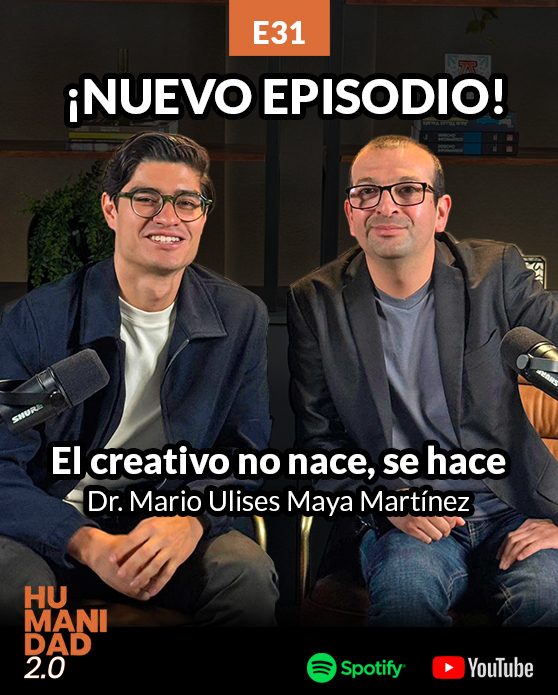
November 18, 2025
Author: María Fernanda Reyes Martínez
Versión en español
Introduction
The concept of palliative sedation has evolved alongside the development of palliative care, an interdisciplinary discipline focused on preventing and relieving the suffering of patients with chronic terminal illnesses. Although its application centers on the patient’s dignity, it may raise bioethical dilemmas for both the medical team and the family. (1)
Development
Palliative sedation does not aim to accelerate or delay the moment of death; this could be one of the main bioethical dilemmas involved. (2) To manage such a complex process, survival must first be predicted, and complete communication must be provided to both the patient and their family. It is the patient’s right to know their health condition and to decide for themselves, or for their legal guardian to discern what the best decision for them is. This is based on the principle of autonomy. (3)
The Sociedad Española de Cuidados Paliativos (SECPAL) defines Palliative Sedation as “the deliberate administration of drugs, in the doses and combinations required, to reduce the consciousness of a patient with an advanced or terminal illness, as much as necessary to adequately relieve one or more refractory symptoms, and with their explicit, implicit, or delegated consent.” (4)
The fundamental objective is to improve quality of life and positively influence the course of the disease. (2) Care is provided to patients with a poor prognosis, offering accompaniment that brings serenity. By reducing refractory symptoms and the distress associated with the end of life, palliative sedation allows for a calmer, more dignified, and humane process—avoiding unnecessary suffering and fostering compassionate support during the final stages. (5)
A terminal illness is defined as one that is in an advanced stage and, therefore, does not respond to treatment, with death expected within a short period of time. Certain criteria must be met to classify a patient at this stage:
The disease is incurable and progresses rapidly
It does not respond to any type of treatment
The life expectancy is less than six months (6)
The emotions of the patient and their family during this stage are extremely important. Emotional management in the face of an unfavorable clinical diagnosis is crucial to the patient’s treatment; if the information is provided adequately and with trust, the patient can make decisions calmly and with confidence in the medical professionals. However, the emotional burden can be overwhelming for some patients and families, who may prefer to seek multiple opinions. (7) They may enter defense mechanisms such as denial, which can be harmful as it prolongs the patient’s suffering.
The predominant symptoms include pain, nausea, fatigue, anxiety, depression, and social difficulties. For this reason, the patient must be accompanied and not feel alone—they often feel like an additional burden to their families and others, so they must be approached with empathy. When the palliative care team intervenes effectively, the patient’s distress and psychological suffering decrease; furthermore, they may also facilitate the “farewell.” (8)
Once the patient and their family have been informed, they must be told about the informed consent process. This is a medical-legal document required for any therapeutic intervention on a patient. It is used for blood transfusions or even for imaging studies with contrast that may pose potential adverse effects. However, in the case of palliative sedation, it is a mandatory document; the family and/or the patient must grant full permission to the expert healthcare professionals to proceed with the technique. (9)
Informed consent is the autonomous acceptance of a medical intervention—or the choice among possible alternative courses—by a patient who decides freely, voluntarily, and consciously, after the physician has provided information and the patient has understood the nature of the illness, the intervention, its risks and benefits, as well as the possible alternatives and their respective risks and benefits. (9)
Sedation may be administered intermittently or continuously. Monitoring of the sedated patient is essential—both the level of sedation achieved and any signs or symptoms of suffering—as well as continuous family support. These are individuals who require constant observation to assess their condition. It is always necessary to provide: presence, understanding, privacy, and availability. (10)
Continuous sedation refers to sedation without rest periods, while intermittent sedation allows for periods of alertness. Discussion is necessary to determine which approach is optimal for the patient. (10) Additionally, the procedure may be performed in either hospital or non-hospital environments, depending on the patient’s decision and comfort. (11)
Dignified death is one of the most complex and fascinating topics in medical ethics. It concerns the patient’s right over their body and the question of whether life should be preserved at all costs. As healthcare professionals, we seek every possible treatment alternative for our patients; however, when the illness progresses beyond medical control, multiple bioethical conflicts arise, and palliative care becomes a necessary intervention. (12)
It is currently essential to continue producing literature and updating national and international guidelines for the management of these patients. (11)
Conclusions
Palliative sedation represents a therapeutic medical intervention whose primary objective is to relieve the suffering of patients with terminal illnesses. This practice seeks to reduce refractory symptoms—those that do not respond to conventional treatment—allowing the patient to experience a calmer, more dignified, and humane end. It does not aim to accelerate or prolong death, but rather to provide peace and serenity in an inevitable process.
It is crucial to raise public awareness about the importance of palliative care and sedation as an ethical and compassionate option. Addressing the topic of death remains a cultural challenge, often surrounded by fear and taboo; however, reflecting on it allows us to prepare emotionally and spiritually, and to communicate our wishes to our loved ones. Anticipating medical decisions regarding end-of-life care helps reduce the suffering of both the patient and their family.
The literature review emphasized the importance of informed consent—a key medico-legal document in any therapeutic procedure. In the context of palliative sedation, this consent plays a central role: it ensures that the patient, or their legal representative, fully understands the nature, goals, benefits, and risks of the intervention, reaffirming the bioethical principle of autonomy.
As a society, we face continuous bioethical dilemmas regarding the end of life: deciding when to intervene, how to alleviate pain without compromising dignity, and how to accompany those in their final phase. In this sense, palliative sedation should not be regarded as a medical failure, but rather as an expression of humanity and respect for the suffering of others. Ultimately, the essential question remains the same: to ease death or to suffer through it?
References:
de Souza AA, Borges GS, Cavalcanti de Oliveira ERN, Bretones LAL. Sedación paliativa para controlar el sufrimiento existencial refractario: diagrama de flujo. Revista Bioética. 2023;31:e3605ES. doi: 10.1590/1983-803420233605ES
Aibar Abad MP. Prescripción farmacológica en la última semana de vida en pacientes ingresados en un hospital [Tesis doctoral]. Zaragoza: Universidad de Zaragoza; 2018. Disponible en: http://zaguan.unizar.es
Hincapié Sánchez J, Medina Arellano MJ. Bioética: teorías y principios. Ciudad de México: Universidad Nacional Autónoma de México, Instituto de Investigaciones Jurídicas; 2019. Disponible en: https://archivos.juridicas.unam.mx/www/bjv/libros/13/6006/1.pdf
Honorato T. Protocolo sedación paliativa. Clínica Familia [Internet]. Santiago de Chile: [s.n.]; 2019. Disponible aquí
García Romo E, Valle Borrego B, Galindo Vázquez V, Sánchez Chica P, Martín Molpeceres E, Pfang B, et al. Sedación paliativa en una unidad de cuidados paliativos de un hospital de tercer nivel: ¿es habitual el sufrimiento emocional o existencial? Med Paliat. 2019;26(4):290-299. DOI: 10.20986/medpal.2019.1071/2019.
Monzoncillo Benés E. El paciente terminal. Cuidados paliativos, manejo de la muerte y ayuda psicológica. NPunto. 2023 May; (VI(62)):71-95. Disponible aquí
Williams Hernández J. La importancia del manejo emocional ante un diagnóstico clínico desfavorable. Neumología y Cirugía de Tórax. 2007;66(4):182-184. Disponible aquí
Flórez Lozano JA. Reflexiones sobre la dignidad del enfermo terminal. Medicina Integral. 2001;37(8):333–337. Disponible aquí
Ortiz A, Burdiles P. Consentimiento informado. Rev Mex Clínica Las Condes. 2010;21(4):644–652. Disponible aquí
Acedo Claro C, Rodríguez Martín B. Sedación paliativa. Rev Clin Med Fam. 2021;14(2):93-97. Disponible aquí
Castillo Pinto A, Leal Arenas F. Intervenciones paliativas en la enfermedad pulmonar obstructiva crónica: revisión narrativa. Rev Chil Anest. 2021;54(2):120-126. Disponible aquí
Esquivel D. Sedación paliativa: un análisis ético-legal desde la perspectiva latinoamericana. Rev Posgrado UNNE [Internet]. 2019;(2):11. Disponible aquí
María Fernanda Reyes Martínez graduated in Medicine from Universidad Anáhuac México Norte, with a strong interest in palliative medicine and anesthesiology. During her social service at CADEBI, she participated in the creation of manuals, the dissemination of bioethical topics, and research projects focused on the benefits and scope of palliative medicine. This article was assisted in its writing through the use of ChatGPT, an artificial intelligence tool developed by OpenAI.
The opinions expressed in this blog are the sole responsibility of their authors and do not necessarily represent the official position of CADEBI. As an institution committed to inclusion and plural dialogue, CADEBI promotes and disseminates a diversity of voices and perspectives, with the conviction that respectful and critical exchange enriches our academic and educational work. We value and encourage all comments, responses, or constructive criticism that readers wish to share.
More information:
Centro Anáhuac de Desarrollo Estratégico en Bioética (CADEBI)
Dr. Alejandro Sánchez Guerrero
alejandro.sanchezg@anahuac.mx





